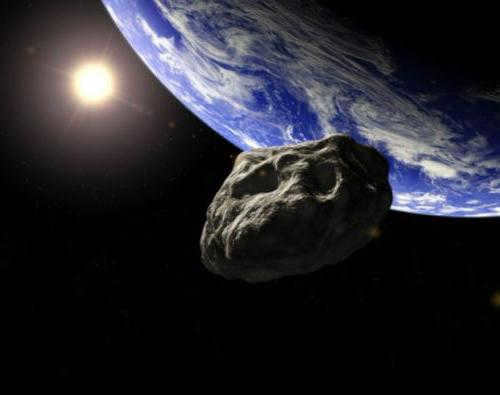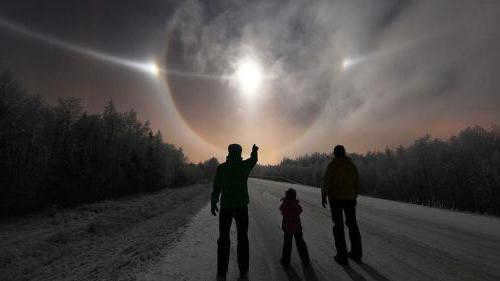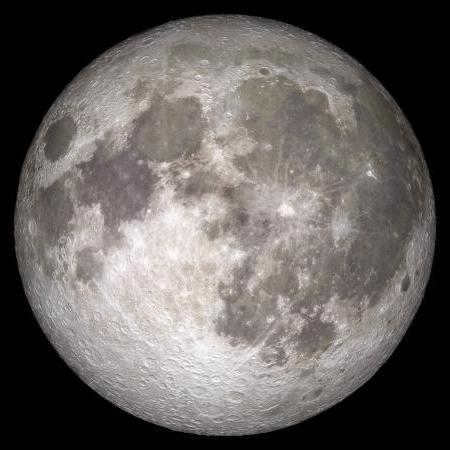Our planet is quite solitary from an astronomical standpoint. The Earth possesses merely one natural satellite – the Moon. However, humans actively compensate for this deficiency by creating their own artificial satellites to keep the planet company.
What is a satellite, and how many does the Earth have?
From an astronomical perspective, a satellite is any object that orbits around another celestial body in a circular path. It remains in orbit due to the force of gravity. The Earth’s satellite does not plummet to the planet’s surface because of this gravitational force, allowing it to maintain a sufficiently high velocity known as the first cosmic speed. For a geocentric orbit, the velocity must be no lower than 7.91 km/s.
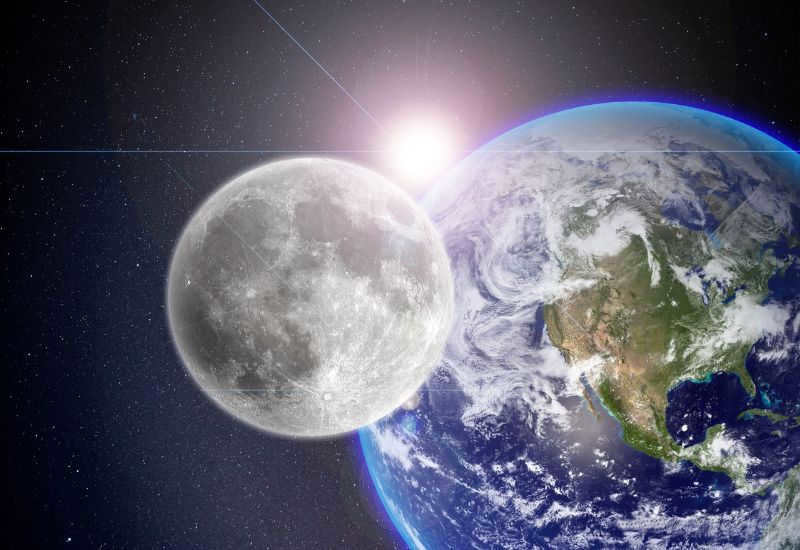

In addition to the Moon, the Earth has several other natural satellites. According to the United Nations, as of April 2022, there have been approximately 12,500 artificial objects launched into orbit. By the end of 2021, more than 8,000 of these devices were still operational.
The Earth’s natural satellite, known as the Moon, has an estimated age of 4.25 billion years, with a margin of error of 25 million years, according to data from 2020. In 1878, George Howard Darwin, the son of the renowned Charles Darwin, proposed the first scientific theory regarding the origin of the Moon. He hypothesized that the Moon formed as a result of the Earth’s rotation, which caused a portion of igneous rock to be ejected into orbit, eventually coalescing into a satellite. However, subsequent analysis of lunar soil samples collected during the Apollo missions has discredited this theory, as no iron was found on the Moon.
During a conference in Hawaii in 1984, scientists concluded that the Moon was created through a collision between a massive cosmic object and the Earth, resulting in the unique chemical composition of the lunar soil and the slight tilt in our planet’s orbit. Additionally, computer simulations conducted by Robin Canup from the University of Colorado suggest that the formation of the Moon may have occurred within a remarkably short span of just one year.
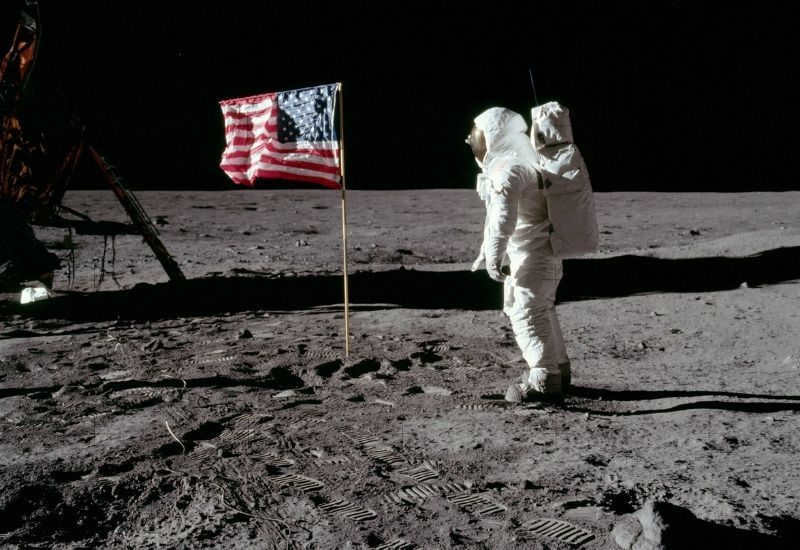
The primary features of Earth’s natural satellite:
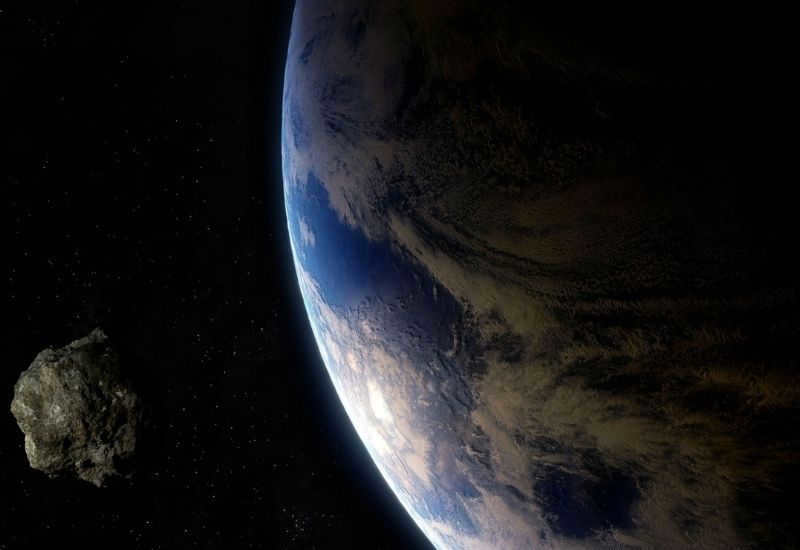
According to a 2012 paper by astrophysicist Mikael Gravnik, the Earth experiences the arrival of a new quasi-satellite every hour. However, these quasi-satellites typically do not remain in orbit for long, breaking free within a day.
Man-made Satellites
Since the initial launch of the first man-made satellite from Earth, their quantity has increased exponentially. Each year, more and more private companies send their devices into outer space.
Overall, man-made satellites can be categorized into several main types:
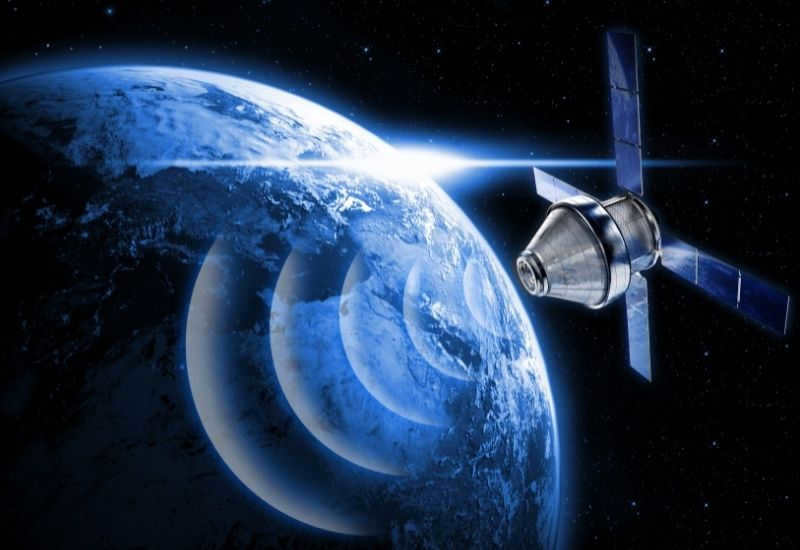
- related to astronomy;
- connected with biology;
- related to meteorology;
- associated with the military;
- used for navigation purposes;
- used for communication and remote sensing.
Other artificial satellites, such as the Chinese orbital station and the International Space Station (ISS), are also part of Earth’s satellite system, along with all manned spacecraft.
Conventionally, it is believed that the Moon is Earth’s only satellite. However, this is not entirely accurate as our planet actually has many more satellites, although not all of them are visible to the naked eye.
The Moon stands out as the only satellite with three distinct characteristics: natural origin, solidity, and permanence. In contrast, other objects in Earth’s orbit possess one or two of these traits.
According to scientists, about 4.4 billion years ago, the Moon came into existence as a result of a collision between Earth and the protoplanet Teia. As a result of this collision, pieces of the Earth’s crust were ejected into space, and some of them eventually merged together to form the Moon. A recent study published in The Astrophysical Journal Letters in 2022 proposes that the process of the rocky debris combining into a singular cosmic entity took merely a few hours.
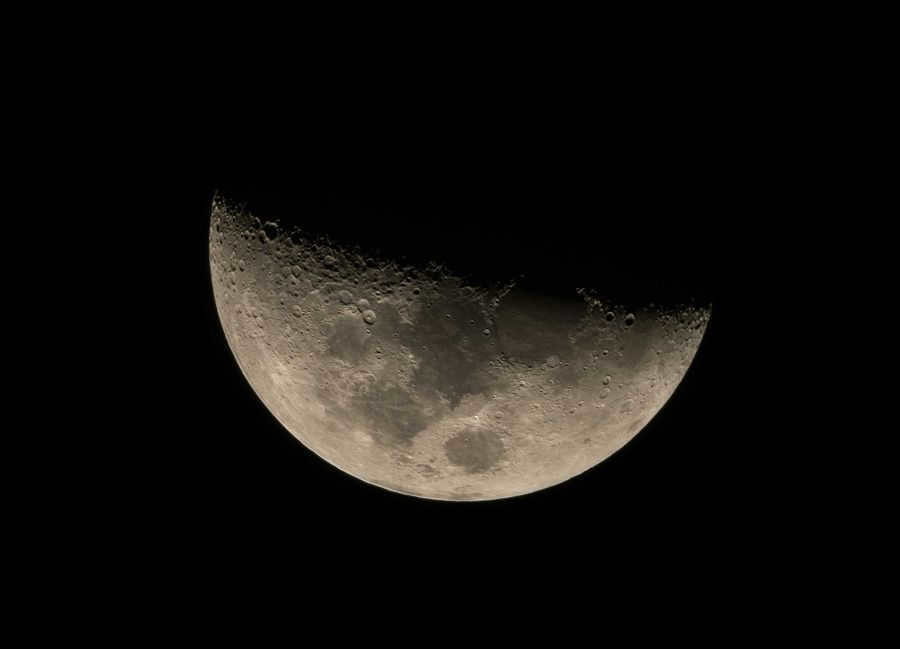
The quest to find additional satellites of our planet commenced in the 18th century, when scientists erroneously identified meteorites and bolides as such. In the 19th century, astronomers managed to identify new satellites of the Earth on two occasions: Frederick Petit in 1846 and Georg Waltemath in 1898. However, both discoveries were ultimately not confirmed. In the 20th century, scientists William Pickering and Clyde Tombaugh embarked on a search for natural satellites, but ultimately concluded that there are no counterparts to the Moon.
During the pursuit of a second Moon, scientists stumbled upon other variations of Earth’s satellites.
1. Transient Satellites
Occasionally, asteroids passing by are ensnared in Earth’s gravitational pull and begin orbiting it temporarily, before eventually breaking free and returning to space. The appearance and disappearance of these temporary moons is regularly observed by astronomers.
One such example is the asteroid 2006 RH120, which has a diameter of approximately 6 meters. It enters Earth’s orbit approximately every twenty years. It was last present from September 2006 to June 2007 and is expected to approach again in 2028.
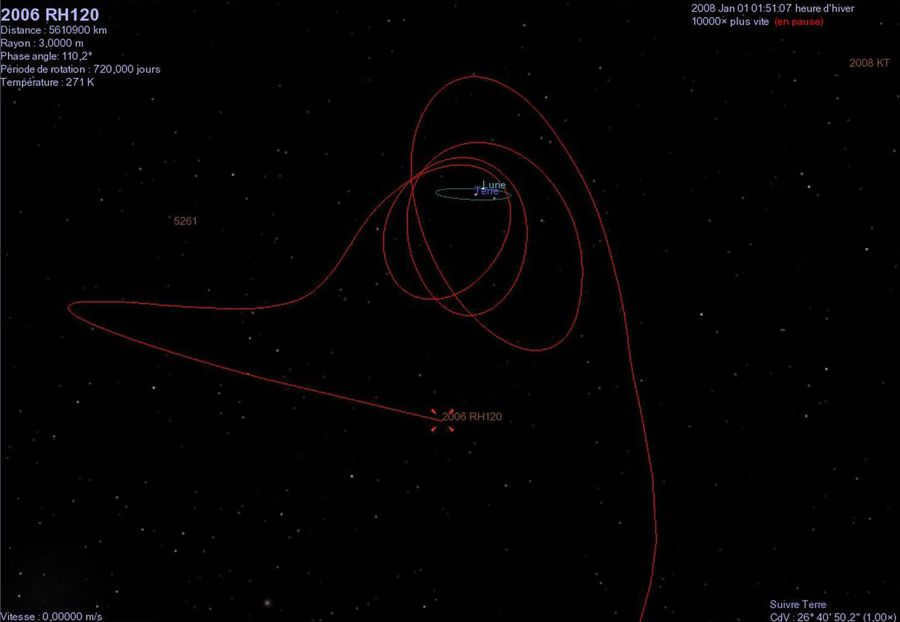
Nevertheless, not all of these satellites end up being of natural origin: asteroid 2020 CD3, which was found in 2020, was actually identified as the remnants of a rocket booster from the 1960s.
There are also intriguing “discoveries”: in 2015, a new temporary moon was detected, but it was later revealed to be the Gaia space telescope after just 13 hours.
2. Quasi-satellites
There are also seven quasi-satellites orbiting the Earth: Cruithni, Kamoaleva, Duende, 2003 YN107, 2004 GU9, 2010 SO16, and the Trojan satellite 2010 TK7.
These celestial bodies actually revolve around the Sun, but their trajectory coincides with that of the Earth, making them constantly close to our planet.
One of the most fascinating quasi-satellites is Kamoaleva, which assumed this status approximately a century ago and is projected to continue accompanying the Earth for the next million years.
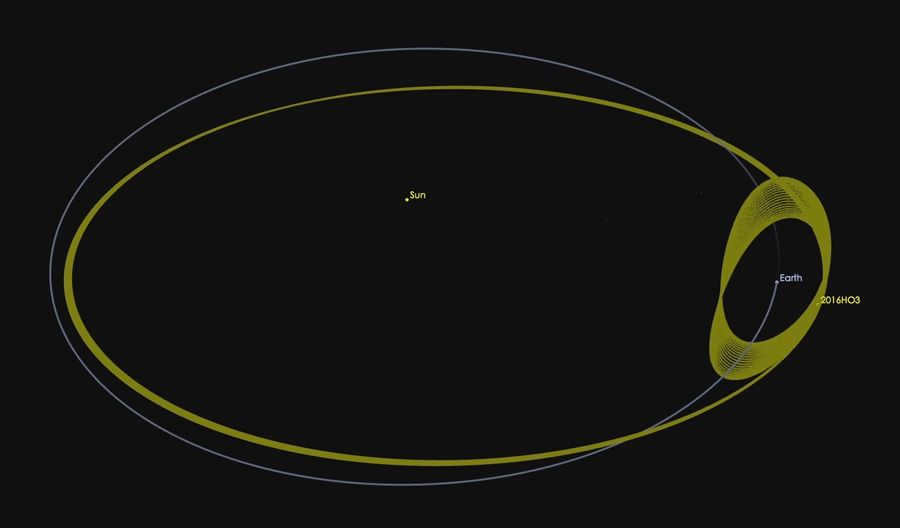
An image from NASA/JPL-Caltech shows the trajectory of the Camoaleva quasi-satellite in a visually artistic way.
Kamoaleva not only orbits the Sun, but also follows a spiral-like path around the Earth.
3. Kordylewski clouds
The Earth and the Moon create a gravitational system in which Lagrange points exist. These points have centripetal force regions where smaller celestial objects can gather due to gravity.
In the case of Earth, there are accumulations of cosmic dust at Lagrange points L4 and L5, which form an equilateral triangle with Earth. These clouds align themselves with Earth and orbit the Sun alongside it.
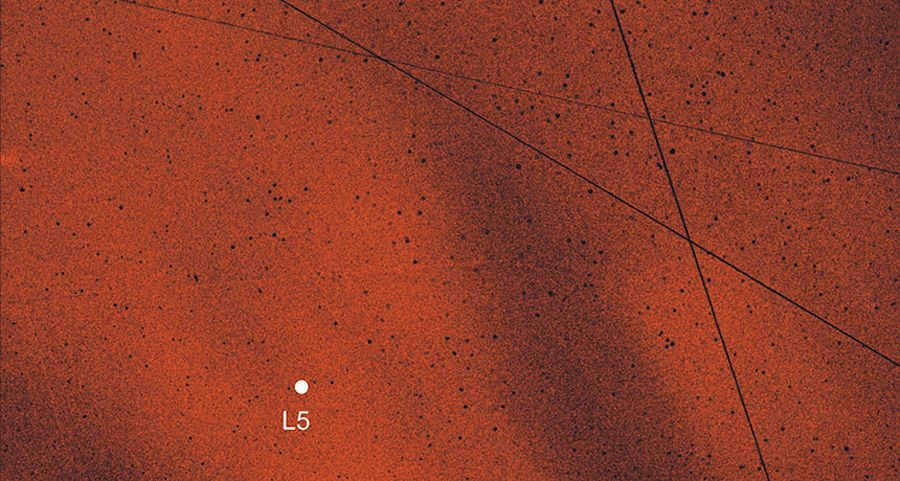
This image showcases the Kordylewski cloud located at L5, as captured by a private observatory telescope in Hungary. Image: J. SLÍZ-BALOGH
These clusters are commonly referred to as Trojans or “ghost moons,” but they are officially known as Kordylewski clouds, named after Kazimierz Kordylewski, the scientist who first observed them in 1956. The discovery of these clouds remained controversial for almost six decades until a group of Hungarian astronomers successfully detected one at L5 in 2018.
Based on various estimates, each Kordylewski cloud has a mass of approximately 10,000 tons and a diameter ranging from 10,000 to 40,000 km.
These satellites are natural and permanent, but they will never form a solid body. The dust particles within them are constantly in motion, some may even escape into space, while new particles are attracted to take their place.
4. Artificial Satellites
The USSR launched the first artificial satellite, Sputnik-1, in 1957. Currently, 70 countries around the world have their own satellites. These satellites serve various purposes, such as observing space objects and weather, navigation, communication, and even military applications.
It is worth noting that the count of satellites also includes orbital stations, of which there are currently two in Earth’s orbit: the International Space Station and China’s Tiangong.
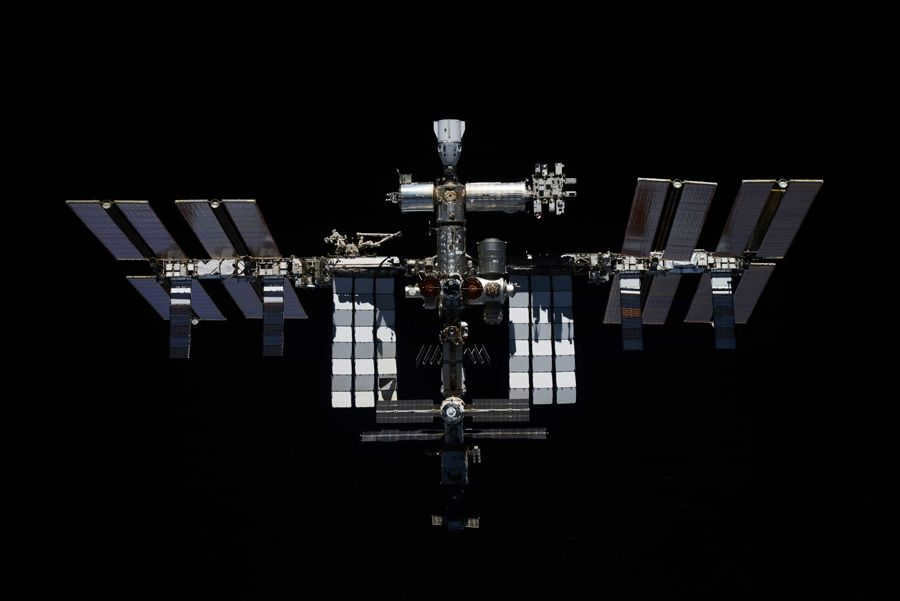
The number of artificial satellites currently orbiting the Earth is not known exactly, as a significant portion of them are used for military purposes and are therefore classified.
According to Statista, there are currently 4877 active satellites in orbit, while the Union of Concerned Scientists (USC) reported 3372 active satellites and 3170 inactive satellites as of January 2021.
It is worth noting that old satellites do not simply remain in space without supervision. There are designated graveyards or debris orbits for them, located at altitudes of 35,986 kilometers and between 600 to 1,000 kilometers above sea level. At these altitudes, the debris from old satellites does not pose a threat to operational devices.
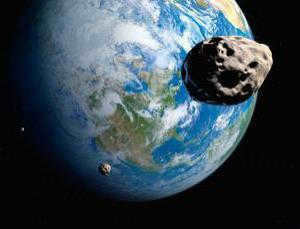
The Earth’s natural satellites (yes, you heard it right – in the plural) have captivated scientists for centuries. Astronomers from the 19th and early 20th centuries made attempts to discover companions to the Moon. However, time and time again, their hypotheses and even convincing evidence were proven false. Nowadays, it is common knowledge that the Moon is the sole natural satellite of the Earth. Nevertheless, there are other objects that have mistakenly been classified as permanent satellites of our planet, and they continue to pique the interest of astronomers as actual, non-fictional entities.
Frederic Petit, a renowned French astronomer, is widely recognized for his captivating exploration of celestial bodies. As the director of the Toulouse Observatory during the mid-19th century, Petit made significant contributions to the field of astronomy. One of his notable theories proposed that the Moon is not the sole natural satellite of the Earth, but rather one of several. According to Petit, these companions were in the form of bolides, which are large and luminous meteors. These candidate satellites were believed to orbit the planet in an elliptical trajectory.
One particular bolide observed by Petit in 1846 gained substantial attention. After analyzing extensive data, including his own observations and those of other scientists, Petit deduced that this celestial body had a rotational period of 2 hours and 45 minutes. Furthermore, its perigee, the point in its orbit closest to Earth, was approximately 11.4 km, while its apogee, the farthest point, reached a distance of 3570 km.
While some astronomers confirmed Frédéric Petit’s measurements and calculations, his hypothesis was quickly proven false. In 1851, Urbain Leverrier presented evidence that contradicted the theory proposed by the scientist from Toulouse.
Alternative theories
Petit was not the sole astronomer who sought to challenge the accepted understanding of the Earth’s natural satellites. He collaborated with a Hamburg scientist named Dr. Georg Waltemath in this endeavor. In 1898, Waltemath announced the discovery of a system of small satellites. According to his calculations, one of these satellites was positioned slightly over a million kilometers away from Earth and completed one revolution every 119 days. The estimated diameter of this hypothetical satellite was 700 kilometers.
Waltemath had predicted that in February 1898, the second moon would pass across the solar disk, providing evidence for his theory. Amateur astronomers in Germany did indeed observe the satellite. However, none of the professional astronomers observing the Sun that day noticed anything similar.
Another attempt
Undeterred, Waltemath continued his pursuit. In July of the same year, he published an article proposing another candidate for the role of Earth’s lunar companion. According to his calculations, this celestial body had a diameter of 746 km and orbited at a distance just over 400 thousand kilometers from our planet. However, these findings were also not substantiated. The hypothetical natural satellites of Earth proposed by Waltemath could not be confirmed as actual entities.
Mysticism
The uniqueness of the satellite “unveiled” by Waltemath was its exclusive visibility during its passage through the Sun’s disk. The celestial body had a minimal light reflection, making it extremely difficult to detect. In 1918, astrologer Walter Gornold proclaimed the rediscovery of Waltemath’s satellite, affirming its enigmatic qualities and assigning it the name Lilith (after Adam’s initial spouse in Kabbalah tradition). The astrologer maintained that the second moon possessed a similar mass to the primary one.
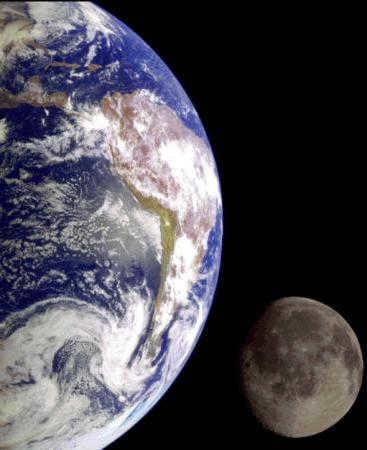
These statements were met with amusement in the scientific community. The existence of such a massive body would not have gone unnoticed, as its presence would have had a pronounced impact on the Moon, leading to alterations in its motion.
The Moon, Earth’s natural satellite, as well as Mars and Venus, its closest neighboring planets, have long fascinated people with their mysterious nature. Throughout the past century, these celestial bodies have often been associated with speculations about extraterrestrial civilizations or military installations from unfriendly nations. Amidst such conjectures, the idea of clandestinely launched artificial satellites into orbit gained credibility.
In the early days of space exploration, during the mid-20th century, there were whispers of two mysterious entities. However, it wasn’t long before the media started suggesting they were of natural origin. The buzz surrounding these new satellites died down in 1959, when renowned astronomer Clyde Tombaugh (known for his discovery of Pluto) concluded, after extensive research of Earth’s surroundings, that there were no objects with a brightness exceeding a magnitude of 12-14.
Surveillance of the Space Proximate to Earth
In the modern era, it is rare to find someone who is unfamiliar with the name of Earth’s natural satellite. The Moon is now universally recognized as the sole satellite. However, astronomers are constantly engaged in monitoring the outer space surrounding our planet. The objective of such scientific endeavors is not to seek out new satellites, but rather to safeguard against potential collisions, predict them, and ensure the safety of orbital operations. Clyde Tombaugh was among the first to embark on such a research expedition.
Currently, the exploration of celestial bodies in the vicinity of Earth is the focal point of several major projects. Thus far, no novel natural satellites of Earth have been discovered throughout the course of these investigations.
Quasi-satellites
Quasi-satellites are objects that orbit around a planet in a way that makes them appear to be satellites, but they are not actually gravitationally bound to the planet. These objects follow a horseshoe-shaped orbit that takes them close to the planet and then back out again. They are called quasi-satellites because they mimic the behavior of natural satellites, but they are not true satellites.
One example of a quasi-satellite is the asteroid 3753 Cruithne, which orbits around the sun and also has a horseshoe-shaped orbit around Earth. From Earth, it appears to be in a stable orbit around our planet, but it is actually just following a complex path that brings it close to Earth and then takes it away again.
Quasi-satellites are an interesting phenomenon because they demonstrate the complex dynamics of celestial bodies in our solar system. While they may not be true satellites, they can still provide valuable insights into the gravitational interactions between planets and other objects.
Overall, quasi-satellites are objects that mimic the behavior of satellites but are not actually gravitationally bound to the planet they orbit. They follow a horseshoe-shaped orbit that brings them close to the planet and then takes them away again. These objects provide valuable insights into the dynamics of our solar system.
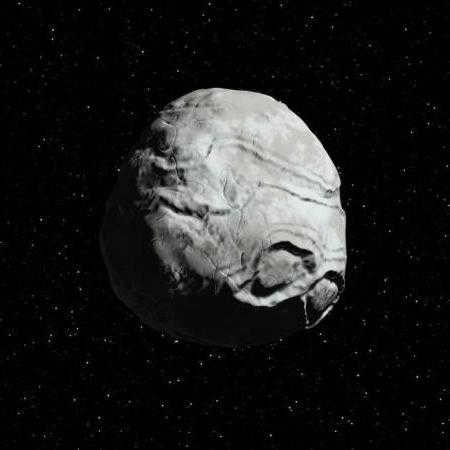
Certainly, the Moon is not the sole entity in close proximity to our planet. Recent research has revealed a wealth of similar information. There exist asteroids that are in a 1:1 orbital resonance with the Earth. In popular media and scientific literature, they are often referred to as “second moons”. The primary distinction of such objects is that they do not orbit the Earth, but rather the Sun.
A prime example of such celestial bodies is the asteroid (3753) Cruithne. It traverses the orbits of Earth, Venus, and Mars during its trajectory. The asteroid possesses a highly elongated orbit, although it unfortunately never comes near enough to our planet to be observed with faint instruments. Cruithne can only be detected with a suitably powerful telescope.
Trojans
Uniquely Phrased Text
There is a different category of objects that can sometimes be classified as natural satellites of the Earth, although they are not. These objects are known as Trojans, which are asteroids that move in the same orbit as our planet, either ahead of it or catching up with it. Currently, only one such body has been confirmed – asteroid 2010 TK7. This asteroid is located 60 degrees ahead of Earth. 2010 TK7 is a relatively small object, measuring around 300 meters in diameter, and it has a rather faint appearance. Its discovery has sparked increased interest among scientists in the search for Trojans in the vicinity of Earth.
Optical illusion
Dual system
The concept of a dual system refers to the existence of two separate but interconnected systems. These systems work together to achieve a common goal or purpose. This concept can be applied to various contexts, such as technology, psychology, and governance. In technology, a dual system can refer to the use of two different operating systems or architectures in a single device. This allows for increased flexibility and compatibility. In psychology, a dual system can refer to the coexistence of conscious and unconscious processes. These processes work together to shape our thoughts, emotions, and behaviors. In governance, a dual system can refer to the division of power between two separate branches or levels of government. This allows for checks and balances and ensures that power is not concentrated in one entity. Overall, the concept of a dual system highlights the importance of synergy and collaboration in achieving desired outcomes.
The Moon, being the nearest celestial body to Earth, is constantly the focus of numerous research endeavors. Naturally, not all aspects of it are fully comprehended. There is still much debate, for instance, surrounding its origin theory. Nevertheless, it can confidently be regarded as one of the most extensively examined entities in outer space, as well as a symbol, a distinguishing emblem of our abode in the vast Universe. This latter point is effectively demonstrated by one of the versions of our planet’s flag, which showcases Earth’s innate satellite.
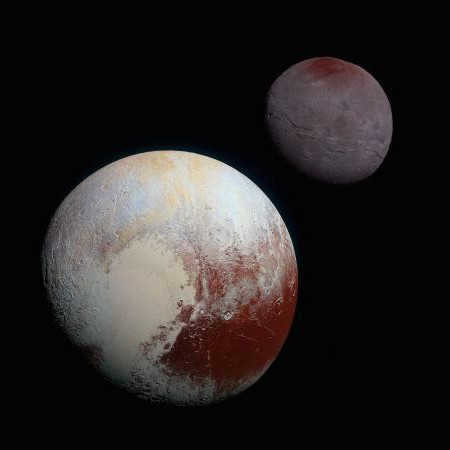

What is most fascinating is that recent studies have shed new light on the status of the Moon. Astronomers now believe that the Moon and Earth are actually a double planet system. They both revolve around a single center of mass, which is located about 5 thousand kilometers away from the center of the Earth. This hypothesis is supported by the significant size of the Moon in relation to the Earth, as well as its ratio to other satellites. A similar example can be seen with Pluto and Charon, which also rotate around the same center of mass and always face each other with the same side.
Therefore, at present, the identity of the Earth’s natural satellite is widely recognized, with the acknowledgement that there exists only one such entity. The quest to locate additional celestial bodies accompanying this satellite has left a profound impact on the annals of astronomy and has served to affirm the well-established notion that humans perpetually yearn for more than what they possess. Paradoxically, it is this very inclination that has facilitated numerous breakthroughs throughout the previous century.
In a broader context, a companion is an individual who journeys alongside or accompanies another. Yet, companionship is not solely confined to human beings. Even planets possess their own “traveling companions”. What are the characteristics of these companions? When was the inaugural artificial satellite launched?
The Origin of Satellites
Johannes Kepler, an astronomer, introduced the term “satellite” in 1611 in his work Narratio de Iovis Satellitibus. In the context of astronomy, satellites refer to celestial bodies that orbit around planets. These satellites follow their own trajectory due to the gravitational pull of their parent planet.
Natural satellites, on the other hand, are celestial bodies that form naturally without any human intervention. They can be created from gas and dust or result from fragments of other celestial bodies being captured by the gravitational forces of a planet. Once influenced by gravity, these objects undergo transformations such as compression and compaction, leading them to acquire a spherical shape (although not always).
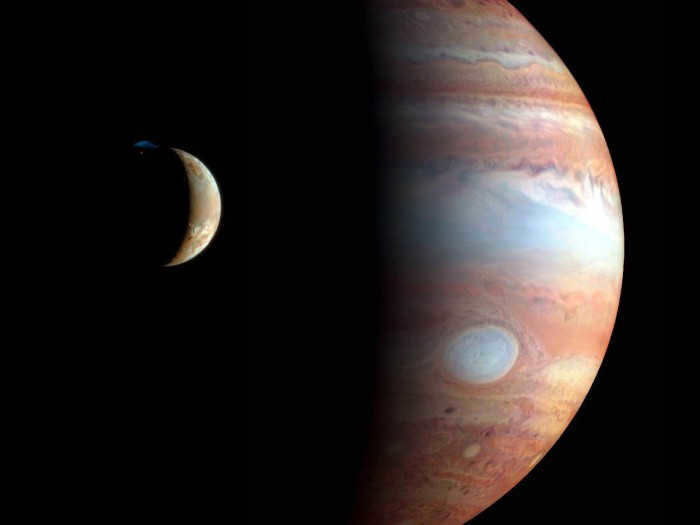
It is believed that the majority of the contemporary satellites orbiting the planets are remnants that separated as a consequence of collisions, or former asteroids. Typically, they are made up of ice and minerals, and unlike planets, they lack a metallic core, featuring craters and fractures.
Once a satellite is identified, it is given a numerical designation. The discoverer then has the authority to designate a name for it as they see fit. Traditionally, these names are connected to mythology. Only Uranus has satellites named after literary figures.
Satellites Orbiting Planets
The number of satellites orbiting planets can vary greatly. Earth, for example, has only one companion – the Moon. On the other hand, Jupiter boasts an impressive total of 69 satellites. Venus and Mercury, however, do not have any companions. Although there have been occasional claims of new discoveries, they are ultimately proven false.
Ganymede, one of Jupiter’s satellites, holds the distinction of being the largest in our solar system. Composed of silicates and ice, it measures an impressive 5,268 kilometers in diameter. It takes approximately 7 days and 3 hours for Ganymede to complete a full orbit around Jupiter.
Mars is accompanied by two celestial bodies named Deimos and Phobos, which mean “terror” and “fear” in Greek. These bodies have a shape resembling a triaxial ellipsoid, with unequal lengths of the semi-axes. According to scientists, the speed of Phobos is continuously decreasing, causing it to gradually approach the planet. Eventually, it is predicted that Phobos will either collide with Mars or disintegrate to form a planetary ring.
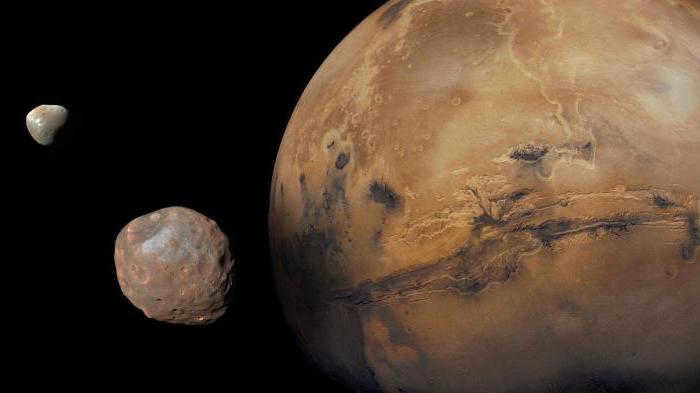
Earth’s Natural Satellite: The Moon
The Moon, Earth’s only natural terrestrial satellite, is the celestial body closest to us and has been extensively studied. It consists of a core, lower, middle, upper mantle, and crust, and even has its own atmosphere.
The Moon’s crust is composed of regolith, a type of residual soil made up of dust and rocky fragments from meteorites. Its surface is adorned with mountains, valleys, ridges, and seas, which are large lowlands formed by solidified lava. The Moon’s atmosphere is extremely thin, resulting in a perpetually black and starry sky above it.

The movement of the Moon around the Earth is a complex phenomenon. It is influenced not only by the gravitational force of our planet, but also by its slightly flattened shape and the stronger gravitational pull of the Sun. The Moon completes one full orbit in 27.3 days. Unlike most other satellites, its orbit lies in the ecliptic plane rather than the equatorial zone.
In addition to its orbital motion, the Moon also rotates on its axis. However, this rotation is synchronized in such a way that the same side of the Moon always faces the Earth. A similar phenomenon can be observed with Pluto and its moon Charon.
Man-made Satellites
Man-made satellites are vehicles created by humans and launched into orbits around planets. They are equipped with a variety of instruments that are essential for conducting research.
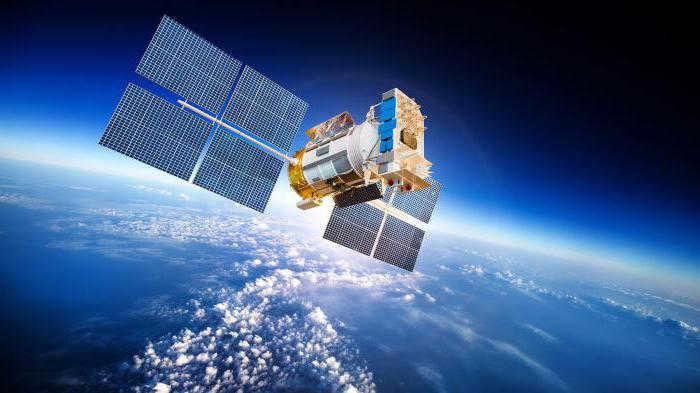
Typically, these satellites are unmanned and are controlled from space stations on Earth. Special manned vehicles are used to launch them into space. Satellites can be classified into several categories:
- Exploratory satellites are used for studying space and celestial bodies.
- Navigation satellites are responsible for determining the location of Earth objects, as well as the speed and direction of the signal receiver (such as GPS and Glonas).
- Communication satellites are utilized to transmit radio signals between distant points on Earth.
- Meteorological satellites receive data on the state of the atmosphere for the purpose of weather forecasting.
The initial man-made satellite to orbit the Earth was launched in 1957 amidst the Cold War. Originating from the USSR, this pioneering satellite was named Sputnik-1. Following suit, the United States released their own satellite, Explorer-1, just a year later. Subsequently, numerous other countries such as Great Britain, Canada, Italy, France, Australia, and many more, joined the space race and launched their own satellites.
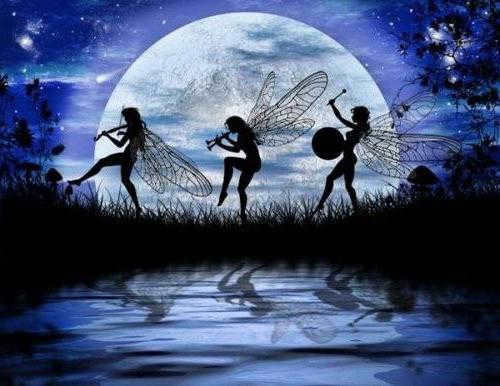
Our planet is truly a marvel in the vast expanse of the Universe, an enigma that continues to captivate mankind’s imagination. Despite our extensive knowledge and cutting-edge technology, there is still so much left to explore and comprehend about Earth. It is possible that we have only scratched the surface of the countless mysteries that our planet holds. One perplexing question that has intrigued scientists for centuries is: “How many natural satellites does Earth possess?”
On the surface, this question may appear simple, with a seemingly straightforward answer: we have long been taught that the Moon is Earth’s only natural satellite. However, is this truly the case? Could there be other celestial bodies orbiting our planet that remain undiscovered and unknown to us?
The Moon has been a source of adoration, trepidation, and fascination for humans throughout history. Presently, we possess a definitive understanding of the Moon’s appearance and the elemental constituents that comprise its surface. Nevertheless, the enigma of the Moon persists, and it is conceivable that mankind will eventually unlock its secrets, as ongoing research into Earth’s natural satellite persists.
Several moons
Believe it or not, the universe is filled with more than just one moon. Each planet in our solar system has its own set of natural satellites. Earth can proudly claim only one “companion,” while Jupiter boasts a whopping 63! The largest of Jupiter’s moons is called Ganymede.
Charon, Pluto’s satellite, is actually so big compared to the planet itself that astronauts initially mistook it for a double planet.
The smallest moon in the solar system is Dactylus. This tiny fellow, with a diameter of just a mile, is not a moon of a planet but rather of an asteroid. It used to be believed that only planets could have moons, but Dactylus has successfully disproven that theory.
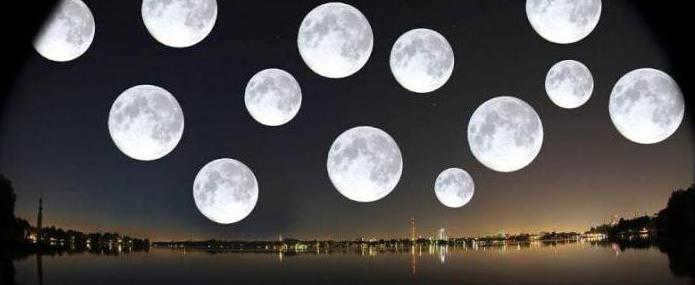
The Origin of the Moon
Scientists believe that billions of years ago, the Earth experienced a cataclysmic event when it collided with another planet called Theia. In mythology, Theia is known as the mother of the moon goddess Selene. The collision resulted in the merging of the two planets and the formation of fragments that eventually became the Moon. This explanation was widely accepted until 2016 when scientists discovered evidence that disproved this theory.
The discovery of heavy isotopes of potassium on the Moon suggests that incredibly high temperatures were involved in its formation. If the previous theory were true, such a collision would have caused the vaporization of a significant portion of the Earth, which is not supported by the evidence.
This is fascinating! Evidence from lunar samples suggests that the Moon was previously covered in active volcanoes.
In The Secret Doctrine, Blavatsky proposes a theory that the Moon predates the Earth and has provided energy and power to our planet, ultimately becoming a lifeless shadow. This theory is rooted in Hindu chronology.
In 2017, virtual ufologist George Graham put forth a new hypothesis regarding the purpose of Earth’s natural satellite: he suggests that it may be hollow and inhabited by extraterrestrial beings. Graham’s theory is based on NASA orbital station images of the Moon’s surface, which reveal artificial objects with precise shapes.
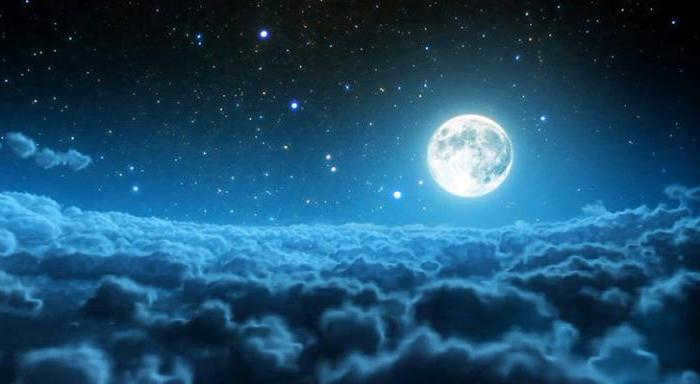
Presently, scientists hold a strong belief that our planet Earth harbored two moons billions of years ago. As you may be aware, the Moon is widely believed to have been formed through a collision between Earth and Theia. This collision theory accounts for the Moon’s contrasting sides. Consequently, one side, which is constantly visible to us, boasts a smooth surface that was shaped by cooled lava, while the opposite side is adorned with numerous mountains. Furthermore, the crust on this side is considerably thicker, and it primarily consists of rare elements.
At this point in time, researchers have decided to expand upon this hypothesis by proposing that our planet was once accompanied by two satellites simultaneously, and the collision between these two satellites altered the lava flows on the side that we can see. Naturally, this is merely a theoretical explanation, but it is important to note that a large portion of our scientific understanding of the world is based on theories.
“Planet Capture”
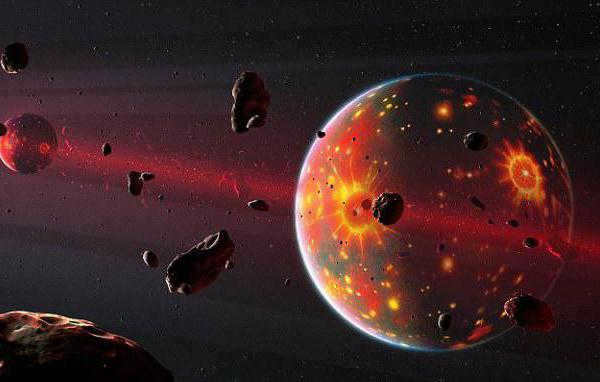
In 2006, observers made a discovery when they detected an object in orbit around the Earth. Upon further investigation, it was determined that this object was actually a natural celestial body. Despite its small size, measuring only a few meters in diameter, the asteroid qualified as a legitimate satellite. However, by 2007, it had departed from the Earth’s orbit.
Experts explain that these temporary satellites are a normal occurrence. Small asteroids are regularly detected near the Earth, but they eventually disappear from orbit over time. The gravitational forces of the Earth and the Moon play a role in these visits. By attracting each other, they are able to capture other celestial bodies. It turns out that our planet is always accompanied by some form of temporary companion.
The enigmatic Lilith
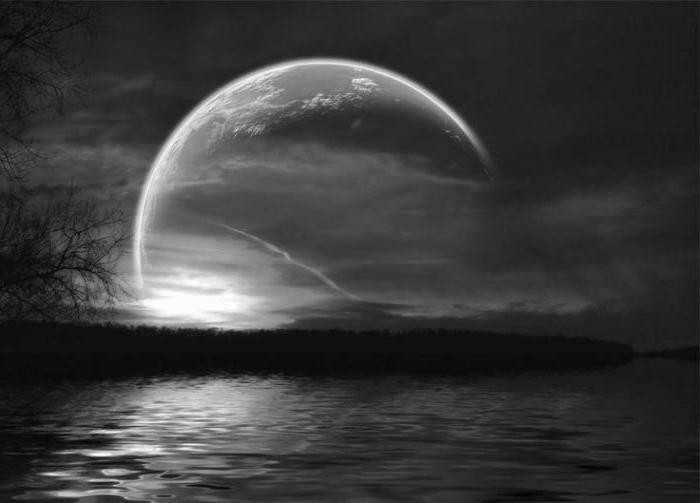
Each of us is familiar with the name of Earth’s natural satellite, the one and only. However, in the late 19th century, astrologer Georg Waltemath from Hamburg claimed to have discovered an entire system of small satellites orbiting the Earth. According to Waltemath, one of these satellites had a diameter of 700 kilometers and was rarely visible to the naked eye.
In the winter of that same year, postal workers in Germany did witness a dark object passing over the Sun. However, experts observing the night sky from another part of Germany and Austria at the same time reported seeing nothing more than sunspots.
In 1918, Walter Hornold made another finding by identifying the satellite of Waltemata as Lilith. He postulated that the masses of the Moon and Lilith were identical, although Lilith’s presence in the sky was extremely challenging to detect. However, contemporary scientists refute his assertions, asserting that if there were another satellite with a comparable mass, it would provoke a discernible reaction from the Moon.
It is worth mentioning that astrology encompasses the notion of a black Moon, which astrologers employ when computing horoscopes, incorporating esoteric symbols.
Additional Earth Satellites
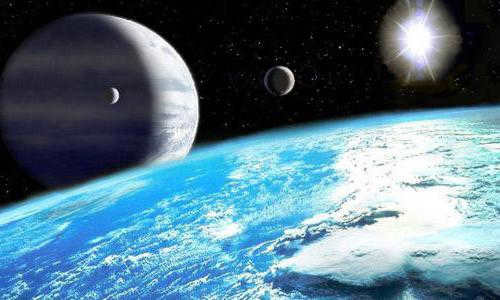
Scientists have been conducting research for centuries to determine if there are any naturally occurring satellites of Earth that are invisible to the naked eye but are in resonance with our planet’s orbit. Numerous studies have confirmed that the Moon is not the sole natural satellite in proximity to Earth.
While the Moon is the only fully-fledged natural satellite of Earth, astronomers often observe other celestial bodies in orbit around our planet, known as temporary satellites. Additionally, there are several quasi-satellites present.
Currently, in addition to the Moon, the Earth boasts a total of eight satellites. Among them, six are classified as quasi-satellites, while one falls into the category of Trojan asteroids. Initially, these objects orbited the Sun, but they were eventually captured by the Earth’s gravitational pull and now exist in a 1:1 resonance with our planet. As a result, these asteroids, along with the Earth, trace a synchronized orbit around the Sun.
The defining characteristic of quasi-satellites lies in their level of deviation from the Earth’s orbit and their inclination relative to the planet’s orbital plane. Furthermore, they maintain a consistent distance from the Earth. However, their stability is not guaranteed, and over time they may break free from the Earth’s gravitational influence, occasionally lasting for centuries.
The Cruithne quasi-satellite
The Cruithne quasi-satellite is a celestial object that follows a unique and fascinating orbit around the Earth. This intriguing phenomenon has captured the attention of astronomers and space enthusiasts alike. The orbit of Cruithne is not like that of a typical satellite, as it does not orbit the Earth directly. Instead, it follows a horseshoe-shaped path that brings it close to our planet before swinging back out into space. This unusual behavior is due to the gravitational interactions between Cruithne, Earth, and the Sun. As a result, Cruithne is often referred to as a quasi-satellite of Earth. Its orbit takes approximately 770 years to complete, making it a truly remarkable and captivating celestial object. The discovery and study of Cruithne have provided valuable insights into the dynamics of celestial bodies and the complex gravitational interactions that occur in our solar system.
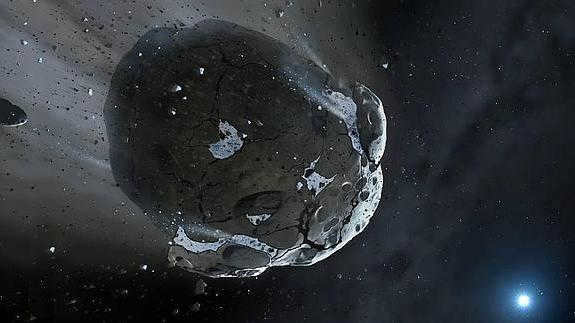
Discovered in 1986, Cruithni is the largest quasi-satellite of the Earth and belongs to the rare spectral class Q. It has a diameter of 5 kilometers and possesses a highly peculiar orbital shape. When observed from our planet, it appears to move in the form of a horseshoe. Interestingly, Cruithni’s orbit not only crosses that of Earth but also those of Venus and Mars.
Each year in November, Cruithni comes remarkably close to Earth, reaching a distance 30 times that between the Earth and the Moon. It is visible to the naked eye, resembling a faint star. The true nature of Cruithni remains a mystery to astronomers.
Duende: The Extraordinary Space Infant
Duende, a peculiar quasi-satellite, bears a striking resemblance to the mystical creatures of Spanish folklore, known as elves or gnomes. This celestial being, measuring a mere 30 meters in diameter, has the distinction of being the tiniest satellite orbiting the Earth. Its serendipitous discovery took place in 2012.
Despite its diminutive size, Duende ventures remarkably close to our planet. Some speculate that its notable proximity to Earth in 2013 may be connected to a bolide sighting during the same period. However, this theory has yet to be substantiated.
Attention! In 2016, yet another satellite was detected in close proximity to Earth. With a diameter of no more than one hundred meters, this celestial companion is predicted to remain in our planet’s vicinity for several more centuries before gradually distancing itself. Researchers have aptly likened the trajectory of its movement to a frog’s leap.


